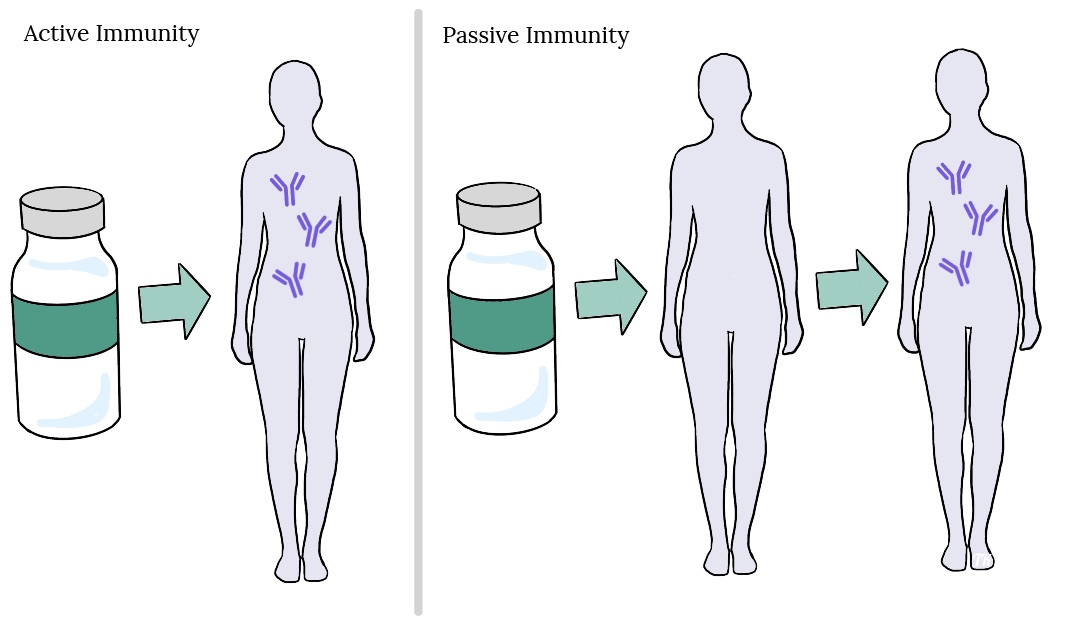What is Immunity?

Immunity refers to the body’s ability to prevent the invasion of pathogens. Pathogens are foreign disease-causing substances, such as bacteria and viruses, and people are exposed to them every day. Antigens are attached to the surface of pathogens and stimulate an immune response in the body. An immune response is the body’s defense system to fight against antigens and protect the body.
There are several types of immunity, including innate immunity, passive immunity, and acquired/active immunity. Image 1.1 is a visual showing active immunity as a process of exposing the body to an antigen to produce an adaptive immune response, while passive immunity “borrows” antibodies from another person.
- Innate immunity is general protection that a person is born with, including physical barriers (skin, body hair), defense mechanisms (saliva, gastric acid), and general immune responses (inflammation). This type of immunity is considered non-specific (Khan Academy, n.d). Although the immune system does not know exactly what kind of antigen is invading the body, it can respond quickly to defend against any pathogen.
- Passive immunity is the body’s capacity to resist pathogens by “borrowing” antibodies. For example, antibodies can be transferred to a baby from a mother’s breast milk, or through blood products containing antibodies such as immunoglobulin that can be transfused from one person to another. The most common form of passive immunity is that which an infant receives from its mother. Antibodies are transported across the placenta during the last one to two months of pregnancy. As a result, a full-term infant will have the same antibodies as its mother. These antibodies will protect the infant from certain diseases for up to a year, and act to defend against specific antigens. Although beneficial, passive immunity is temporary until the antibodies are gone (wane), since the body has not produced the antibodies.
- Acquired (adaptive) immunity is a type of immunity that develops from immunological memory. The body is exposed to a specific antigen (which is attached to a pathogen) and develops antibodies to that specific antigen (Khan Academy, n.d.). The next time said antigen invades, the body has a memory of the specific antigen and already has antibodies to fight it off. Acquired immunity can occur from exposure to an infection, wherein a person gets a disease and develops immunity as a result. Acquired immunity also occurs from vaccination wherein the vaccine mimics a particular disease, causing an immune response in the vaccinated individual without getting them ill.

